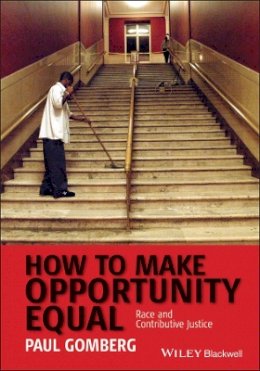
Stock image for illustration purposes only - book cover, edition or condition may vary.
How to Make Opportunity Equal: Race and Contributive Justice
Paul Gomberg
€ 41.29
FREE Delivery in Ireland
Description for How to Make Opportunity Equal: Race and Contributive Justice
Paperback. This critical examination of racial equality takes a new approach to breaking down racial barriers by proposing a system of equal opportunity through shared labor and contributive justice. A discussion board for ideas and comments relating to the book can be found at: http://howtomakeopportunityequal. blogspot. com/. Num Pages: 192 pages. BIC Classification: JFFJ; JFSL1. Category: (P) Professional & Vocational. Dimension: 169 x 246 x 11. Weight in Grams: 348.
HOW TO MAKE OPPORTUNITY EQUAL
HOW TO MAKE OPPORTUNITY EQUAL
“Paul Gomberg makes a powerful and provocative case that real equality of opportunity can only be achieved by overturning the social division of labor that unfairly handicaps not just black but the working class in general.”
Charles W. Mills, University of Illinois at Chicago
“An important and original contribution to contemporary debates about justice in political philosophy; and accessible introduction to those debates for students and the lay reader; and a powerful and important challenge to policymakers, educators and employers, to think hard about their responsibilities for enabling people to lead flourishing lives.”
... Read more
Product Details
Format
Paperback
Publication date
2007
Publisher
John Wiley and Sons Ltd United Kingdom
Number of pages
192
Condition
New
Number of Pages
192
Place of Publication
Hoboken, United Kingdom
ISBN
9781405160827
SKU
V9781405160827
Shipping Time
Usually ships in 7 to 11 working days
Ref
99-1
About Paul Gomberg
PAUL GOMBERG is Professor of Philosophy at Chicago State University. He has published widely in political philosophy, the history of philosophy, and on race.
Reviews for How to Make Opportunity Equal: Race and Contributive Justice
“Undeniably represents a significant contribution to the debate on equality of opportunity. It does valuable work in demonstrating the need to explore a more 'human-activity-based' approach to equal opportunity and provides as such a good starting point for further research. It is written for a broad audience: its argument is accessible and challenging not only for advanced students and professors ... Read more
